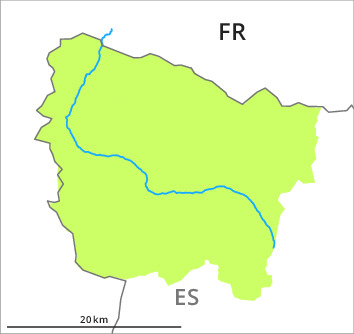
Danger level

2400m
Avalanche Problem

Persistent weak layer

2400m


The Avalanche Warning Service currently has only a small amount of information that has been collected in the high Alpine regions, so that the avalanche danger should be investigated especially thoroughly in the relevant locality.
Weakly bonded old snow requires caution.
A generally favourable avalanche situation will prevail. Weak layers in the upper part of the snowpack can be released in very isolated cases also on steep, little used shady slopes. Caution is to be exercised in areas where the snow cover is rather shallow at high altitudes and in high Alpine regions, and at transitions from a shallow to a deep snowpack, when entering gullies and bowls for example. These can as before be released, even by small loads in isolated cases, but they will be small in most cases.
Snowpack
>All aspects above approximately 2000 m: The upper section of the snowpack is favourably layered and its surface has a melt-freeze crust that is strong in many cases.
On steep sunny slopes the snowpack will soften only slowly. Steep, little used shady slopes high altitudes and the high Alpine regions: The snowpack remains prone to triggering in particular in areas where the snow cover is rather shallow. Stability tests and weak layers in the old snowpack indicate the existence of a weak snowack.
In some localities up to 2 cm of snow fell in the past few hours. The northwesterly wind has transported some snow.
In all regions at intermediate and high altitudes less snow than usual is lying. At low altitude from a snow sport perspective, in most cases insufficient snow is lying.
On steep sunny slopes the snowpack will soften only slowly. Steep, little used shady slopes high altitudes and the high Alpine regions: The snowpack remains prone to triggering in particular in areas where the snow cover is rather shallow. Stability tests and weak layers in the old snowpack indicate the existence of a weak snowack.
In some localities up to 2 cm of snow fell in the past few hours. The northwesterly wind has transported some snow.
In all regions at intermediate and high altitudes less snow than usual is lying. At low altitude from a snow sport perspective, in most cases insufficient snow is lying.
Tendency
Slight increase in danger of moist avalanches as a consequence of the moist air.